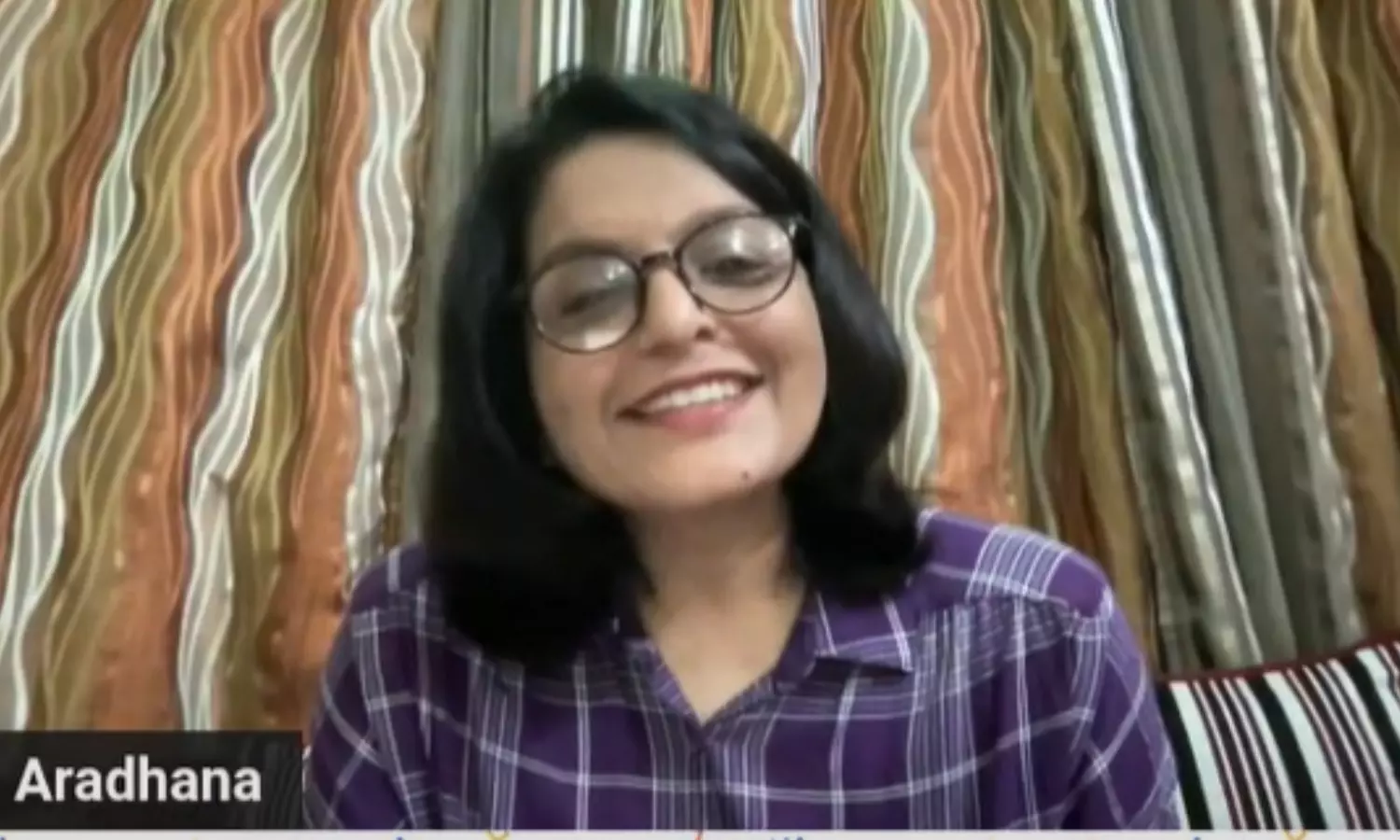Olympics
Aradhana Sharma: Changing perceptions and helping athletes eat right
The Chief Nutritionist of the Indian contingent spoke exclusively to The Bridge ahead of the opening ceremony in Paris.

Aradhana Sharma is the Chief Nutritionist of the Indian Olympic Contingent at Paris. (Photo credit: The Bridge)
Last month, when the Indian athletes were completing their final rounds of preparations for the 2024 Olympics in Paris, the appointment of a sports nutritionist for the Indian contingent brought smiles across the sporting fraternity.
Finally, the importance of nutrition in sports appeared to have set in. But it wasn't always like this.
When Aradhana Sharma returned to India after having worked for several years with professional athletes in the U.S, she realized that not very many in India were aware of the importance of eating right for a given sport.
After years of back-breaking work, she has finally been able to instill the topic of nutrition and its importance in the minds of Indian athletes.
And her appointment as the Chief Nutritionist of the Indian contingent to the 2024 Olympics, a first for India, is validation of her work and the importance accorded to the subject by the Indian Olympic Association.
Just before the Indian contingent departed for Paris, The Bridge spoke with Aradhana Sharma to set a sense of the preparations heading into the Olympics.
The Olympic dining experience
Athletes rely on balanced diets that are rich in protein and other nutrients to maintain their peak performance.
One of the main challenges is ensuring that athletes stick to their diet plans as the Olympic village has an extensive menu that includes World food, Asian food, and authentic French cuisine.
As athletes look to navigate the extensive buffet in Paris, Aradhana predicted that international athletes will be drawn to authentic French cuisine, while Indian athletes might prefer Asian or world cuisine options.
"For Indian athletes, what I see looking at the menu is that they will be going to either Asian or world cuisine".
"We will have butter chicken, veg biryani, and some green curries, so I think that will be their favorite to visit."
To aid their selection process, an app - launched by the Indian Olympic Association - shall disseminate information about the menu in the Olympic Village, with items color-coded to indicate vegetarian, non-vegetarian, protein-rich, and carbohydrate-rich foods.
Aradhana emphasized that at this level, athletes understand the importance of diet and generally do not deviate from their plans until after their events. And the app is meant to help athletes make informed choices.
"The app does not contain their individual diet plans but contains the menu, which is going to be available in the Olympic Village," said.
"We have sorted the menu in a way that they can pick and choose what they're going to eat that day."
As the chief nutritionist, Aradhana's role is to ensure that athletes are familiar with the food available in the Olympic Village. The menu, received in advance, includes a variety of vegetarian and vegan options.
"This time, the good thing for us is that we were able to find the menu in advance and there are a lot of vegetarian and vegan options," she explained.
Managing hydration and acclimatization
Another key talking point is the high temperatures at Paris and Aradhana noted that Indian athletes are used to high temperatures.
"The temperature in Paris isn't going to be much higher than what we already have in India. So, we are assuming it's not going to be affecting them because in India around eight months we have the similar temperature," she said.
"When the temperatures are higher and they're sweating more, we do need to worry about their hydration, their electrolyte replenishment and all that. They all have their hydration plans with that," she added.
Also, different sports require different dietary needs.
Weight-specific sports like wrestling and boxing require varying food quantities based on the athlete's weight category.
The type of sport—whether power-based, endurance-based, or skill-based—also influences dietary needs. 'Skill sports' require nutrient-dense food due to intense mental focus, while power athletes need diets rich in protein, carbohydrates, and fats to match their high energy expenditure.
"We do identify the events, their height, weight, and everything. So when we plan a diet for a certain sport, a lot of things go in," Aradhana explained.
"If I'm working with a heavyweight athlete or if I'm working with a power athlete, we will make sure they eat a lot of calories in terms of protein, carbohydrates, and a bit of fat because they're burning those many calories when they are in the training," she added.
But for sports disciplines that are more skill based, the need of nutrients are different.
"Skill sports generally would require less calories, but they need nutrient-dense food. Because their brain is working the whole time and the brain can drain you, as it uses a lot of energy. we encourage them to have more dry fruits and nuts of different kinds."
And it turns out that several of these practices can be adopted by individuals that aren't necessarily athletes themselves.
Everyday nutrition and awareness
Regular people, according to Aradhana, can take a leaf out of an athletes' book of diet.
For instance, eating according to the calories you burn, thinking about how food choices affect health and fitness, and maintaining discipline when eating are habits that can be adopted.
"I generally tell people, eat what you can burn. Don't put your heart in food, put your brain in food. Just think about what you're eating and how it is going to affect your health, your life, your recovery or your overall fitness," she advised.
Initially, sports nutrition wasn't well-known, and several challenges existed. But now, things are changing and Aradhana has observed significant improvements in the thought process around this topic.
"It's always good to be part of something new. Our athletes will be more comfortable having a nutritionist around, especially since they often struggle with unfamiliar food and environments," Aradhana opined.
Now, with more sports nutritionists and better education among athletes and coaches, there is greater adherence to proper nutrition in Indian sports fraternity. Regional variations in food still pose challenges, but overall awareness and compliance, according to Aradhana, have improved.
"Now the athletes understand the importance of nutrition much better. They do stick to the plans and they know if they are deviating from their plan, it is going to affect their training," she concluded.

